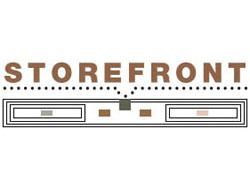Store Front - April 2007
By Sonna Calandrino
Here’s good news for flooring retailers. A study published in late January by the Cleveland research firm, The Freedonia Group, says world demand for flooring is projected to climb more than 4% annually through 2010 to $162 billion.
The obvious question is: How do you get your share? Take these five steps to improve your bottom line in this growth climate.
Step One: Understand that today’s customer wants to explore new design choices.
Know your customer. That doesn’t mean assessing past demographics. It means staying close to your consumers, understanding them as they evolve and change, learning what their emerging attitudes are, and then capitalizing on that powerful knowledge.
Today’s American consumers don’t want to be conformists. They want relevant products that express their personalities and emotions. By staying close, you can learn more about what they want. This knowledge will allow you to train your sales staff and create your merchandising and advertising to speak to customers far better than your competition does.
It’s no surprise when analysts say consumers are always on the lookout for something new and different. Some have identified the niche product as a new form of mainstream retailing. Call it what you will, that kind of knowledge is opportunity for the retailer.
Step Two: Know more than your customer about current trends and fashion.
Today’s customer is living in an interesting time. In spite of a climate of abundance, it’s a time when prices are always under pressure due to competitive world markets. Consumers have traveled extensively, and they are tech-savvy.
The “saturated” consumer is eager to try something different. Here’s your opportunity to show the absolute latest in flooring fashion. Consider introducing things like cork, glass, and the new class of resilients. This is your opportunity to talk not just about flooring, but also about the larger design concept. Also, look at those high margin add-on sales like listellos, borders, trim, insets, etc. Your customer is in the mood for new ideas. This kind of selling also presents opportunities for upscale brands.
The consumer’s level of education is far above yesterday’s consumer. Previously, your store (or your competitor’s) was most likely her only source of information. One design website I visited recently said it used to be a buyer beware world. Now, with a more sophisticated consumer, it’s called “buyer aware.”
I’m sure you’ve experienced this before: a consumer comes to your store loaded with information she found online. The last thing you want to be is less informed than your customer. To introduce high margin, new, maybe niche products, it takes a trained sales staff. So, if you know what’s going on in the mind of your customer, it makes sense to develop a training program that at least covers the basics. Your staff should be comfortable discussing the differences between solid and engineered wood, ease of laminate installation, the design possibilities presented by ceramic, stone and porcelain and why a custom colored grout (another high margin add-on sale) is an absolute must for some tile.
Step Three: Be able to recognize today’s shopper.
Want to know more about today’s shopper? Try these facts on. The typical shopper is a woman. Average age: 31. Generally she’s a frequent, leisure time shopper. BIGresearch and MARS Advertising, two authorities on online market intelligence and consumer information, conducted a semi annual survey. The results showed that these frequent leisure time shoppers spend $113.33 per shopping trip. Don’t dismiss the information because it seems to be “recreational spending.”
Two very interesting observations pertinent to flooring retailers came out of this study. First, shoppers want to relax, get away from the house and wander up and down aisles. Add to that a survey statistic which shows 32% of the shoppers studied made purchases at discount stores. The other side of that statistic is that 68% shopped retail.
Step Four: Create an environment where she feels comfortable.
There’s a huge opportunity to re-merchandise your stores to draw in the customer and influence her in ways she wants to be influenced. How are you presenting your merchandise? Are you using vignettes and making use of accessories to show off your new products in the best light? Are your aisles reaching out to your customer with messages like a credit promotion or your current ad?
Make sure your ads and merchandising materials speak to today’s customer. The language and visuals should be current and interesting.
Step Five: Explore new advertising opportunities.
In advertising, we must speak the language of the 21st century. According to consumer researcher Yankelovich, we’re bombarded with up to 5,000 ad messages a day, up from “just” 2,000 in the mid 1970s. Presenting up-to-date advertising is key to catching the eye of today’s consumer. Copyright 2007 Floor Focus
You have only to look around you to see the latest in advertising trends. For example, “Wallpaper” billboards are making way for digital ones with multiple, rotating messages. These create as much controversy as they do attention, but there are things you can do, quite reasonably, which are full of punch.
Next time you stand in line at the grocery checkout or the bank, look around you. If a video message board is playing, consider whether or not it’s grabbing your attention. Look at the checkout aisle display which has taken the place of some of the old fashioned impulse purchase displays. That’s intentional. They’re attempting to reach out to the waiting audience.
We’re all a waiting audience at some time of the day. Consider researching opportunities in your community to build your brand and tap into this new brand messaging technique. Certainly, know your costs before taking the plunge, but consider how this unique new technique can meet so many of the opportunities we’ve discussed in this short space.
